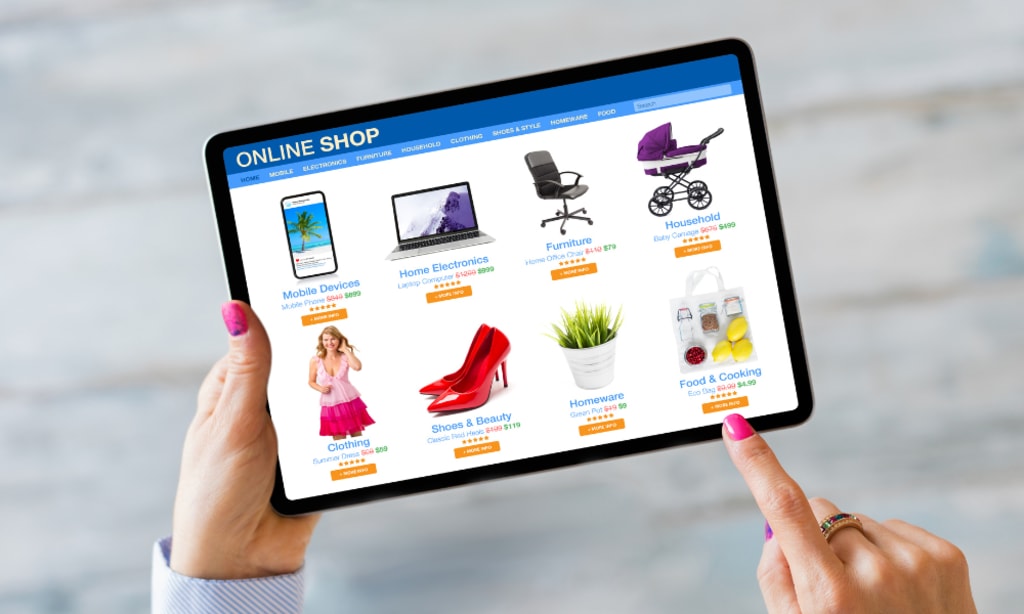Tips for In-Store and Online Shopping Success
From Pre-Shopping Activities to Post-Shopping Organization, Payment, and Returns, Learn How to Make the Most of Your Shopping Experience.

Introduction
Shopping is an activity that most people engage in on a regular basis. Whether it's for groceries, clothing, or other necessities, shopping plays an important role in our daily lives. In many ways, shopping has become an integral part of our culture, with retail therapy being a popular way to relieve stress and unwind. However, shopping involves more than just picking up items from a store or online. It requires planning, budgeting, decision-making, and sometimes even negotiation skills. This outline will explore the various aspects of shopping, from pre-shopping activities such as making a list and research, to in-store shopping techniques like comparison shopping and choosing the right products, to post-shopping activities like inventory and returns. Additionally, it will touch on the growing trend of online shopping, discussing its pros and cons and safe shopping practices. With this outline, we hope to provide a comprehensive guide to shopping, helping readers become more efficient and effective shoppers.
Pre-Shopping Activities
Before heading out to the store, there are several pre-shopping activities that can make the shopping experience more efficient and productive. These activities include making a list, budgeting, and research.
A. Make a List
Making a list is an essential pre-shopping activity that helps to ensure that nothing is forgotten during the shopping trip. The list should include all the necessary items that need to be purchased, along with quantities, sizes, and any other important details. By having a list, shoppers can stay on track and avoid making unnecessary purchases.
B. Budgeting
Setting a budget is another important pre-shopping activity. This involves determining how much money can be spent on the shopping trip and allocating funds accordingly. By setting a budget, shoppers can avoid overspending and keep their finances in check.
C. Research
Researching products and prices is also a crucial pre-shopping activity. This involves checking prices at different stores, reading product reviews, and comparing features and benefits. By doing research, shoppers can make informed decisions and avoid wasting money on inferior products. Additionally, shoppers can look for sales, promotions, and discounts, which can help save money in the long run.
In-Store Shopping
In-store shopping involves physically going to a store and selecting products to purchase. There are several techniques that can be used to make in-store shopping more efficient and effective.
A. Store Layout
Familiarizing oneself with the store layout is an important in-store shopping technique. By knowing where products are located, shoppers can save time and avoid getting lost. Additionally, understanding the store layout can help shoppers plan their route through the store, making it easier to find everything on their list.
B. Comparison Shopping
Comparison shopping involves comparing prices, features, and benefits of different products to make an informed decision. This technique is particularly useful when purchasing big-ticket items, as prices can vary significantly between stores. By comparing prices and features, shoppers can ensure they are getting the best value for their money.
C. Choosing the Right Products
Choosing the right products involves considering factors such as quality, brand reputation, and price. This technique requires shoppers to assess their needs and preferences and make decisions accordingly. By choosing the right products, shoppers can avoid wasting money on items that are not suitable for their needs.
D. Shopping Carts
Using a shopping cart is another important in-store shopping technique. Shopping carts can help shoppers carry their items and avoid having to make multiple trips to the car. Additionally, shopping carts can be used to keep items organized and easily accessible, making the shopping experience more efficient.
Payment and Checkout
After completing their shopping, shoppers need to pay for their items and checkout. There are several important aspects of payment and checkout that shoppers should be aware of.
A. Payment Options
Most stores offer a variety of payment options, including cash, credit cards, debit cards, and mobile payments. It's important to choose a payment method that is secure and convenient. Additionally, shoppers should make sure they have enough money to pay for their items before they get to the checkout.
B. Checking Prices
Before paying for their items, shoppers should check the prices to ensure they are accurate. This involves checking the prices of each item against the prices on the shelf or in the flyer. If there are any discrepancies, shoppers should bring them to the attention of the cashier or customer service representative.
C. Discounts and Coupons
Discounts and coupons can help shoppers save money on their purchases. Shoppers should check for any available discounts or coupons before paying for their items. This can be done by checking the store's website, flyers, or social media accounts. Additionally, many stores offer loyalty programs or rewards programs that can provide discounts or other perks.
D. Receipts
After paying for their items, shoppers should always get a receipt. The receipt serves as proof of purchase and can be used for returns or exchanges. Additionally, shoppers should check their receipt to ensure that all the items and prices are correct. If there are any errors, shoppers should bring them to the attention of the cashier or customer service representative.
Post-Shopping Activities
After completing their shopping, there are several post-shopping activities that shoppers should undertake to ensure a smooth and organized shopping experience.
A. Inventory
Inventory involves checking the items purchased against the shopping list and ensuring that everything is accounted for. This can be done by going through the items and checking them off the list. Additionally, shoppers should make sure that all items are in good condition and are not damaged or defective.
B. Storage
After completing inventory, shoppers should ensure that their items are stored properly. This involves placing perishable items in the fridge or freezer and organizing non-perishable items in a way that makes them easily accessible. Additionally, shoppers should ensure that items are stored safely to avoid damage or theft.
C. Returns and Exchanges
If any items need to be returned or exchanged, shoppers should do so as soon as possible. This involves bringing the items and the receipt to the store and following the store's return or exchange policy. Shoppers should also ensure that they have all the necessary documentation, such as the receipt or proof of purchase.
D. Feedback
Providing feedback to the store is another important post-shopping activity. This can be done by filling out a customer satisfaction survey or leaving a review online. Feedback can help stores improve their products and services and can also provide valuable information to other shoppers.
Online Shopping
Online shopping has become increasingly popular in recent years, and it offers a convenient and efficient way to shop from the comfort of one's home. There are several aspects of online shopping that shoppers should be aware of to ensure a successful shopping experience.
A. Product Research
Before making a purchase online, it's important to research the product thoroughly. This involves reading product descriptions, reviews, and ratings to ensure that the product meets the shopper's needs and expectations. Additionally, shoppers should compare prices and features across different websites to find the best deal.
B. Website Security
When shopping online, it's important to ensure that the website is secure. This can be done by checking for a secure connection, indicated by the "https" in the URL and a padlock icon. Additionally, shoppers should only provide personal and payment information on secure websites.
C. Payment Options
Online stores offer a variety of payment options, including credit cards, debit cards, PayPal, and other online payment services. Shoppers should choose a payment method that is secure and convenient. Additionally, shoppers should ensure that they have enough money to pay for their items before they complete the checkout process.
D. Shipping and Delivery
Shipping and delivery are important aspects of online shopping. Shoppers should check the shipping options and costs before making a purchase. Additionally, shoppers should ensure that their shipping address is correct and that someone is available to receive the package upon delivery.
E. Returns and Exchanges
If the product received is damaged or defective, shoppers should follow the store's return or exchange policy. This involves contacting the store and arranging for a return or exchange. Shoppers should also ensure that they have all the necessary documentation, such as the receipt or proof of purchase.
Conclusion
In conclusion, shopping can be a fun and rewarding experience, whether it's done in-store or online. However, there are several important aspects of shopping that shoppers should be aware of to ensure a successful and efficient experience. Before shopping, it's important to prepare by making a shopping list and setting a budget. In-store shopping involves navigating the store, checking prices and discounts, and paying for items. Online shopping involves researching products, ensuring website security, choosing payment options, and handling shipping and returns. After completing shopping, shoppers should undertake post-shopping activities such as inventory, storage, returns and exchanges, and providing feedback to stores. By being prepared and informed, shoppers can have a successful and enjoyable shopping experience.






Comments
There are no comments for this story
Be the first to respond and start the conversation.